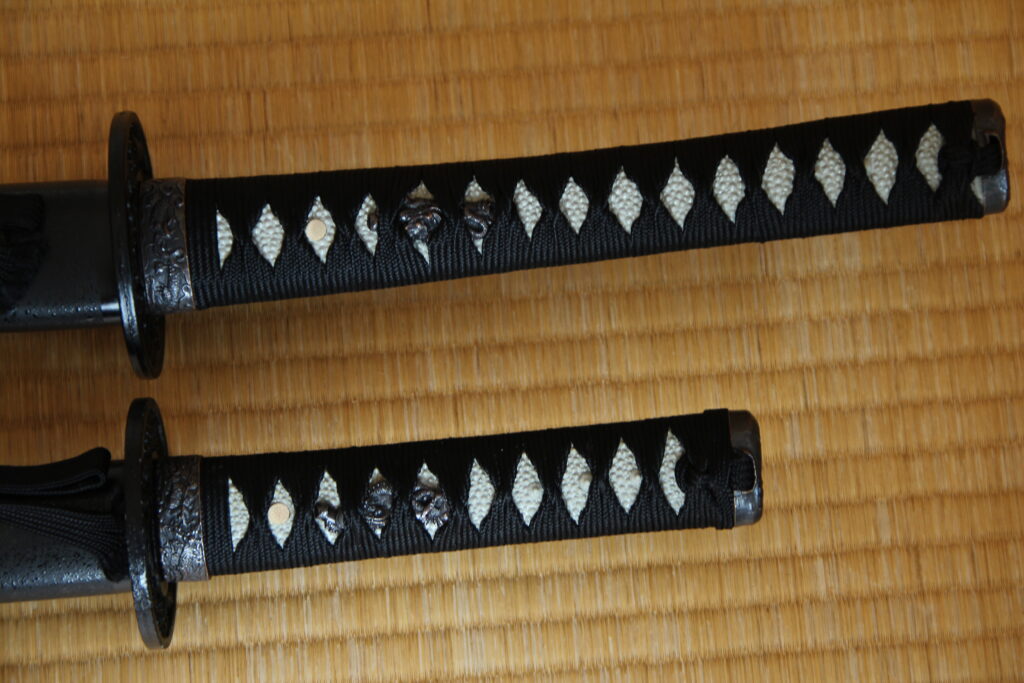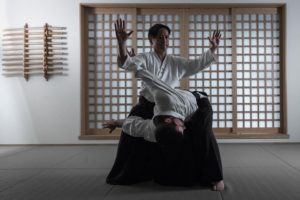About “Rei”
(*The Japanese term “rei” is translated variously English words such as etiquette, manners, courtesy, decorum, respect, propriety or bowing as a manner.)
“Rei” is an essential element in practicing “Budo”. My teacher, Kondo Katsuyuki, Somucho of Daito-ryu Aikijujutsu, said as follows.
– “Rei” is to protect our life. In Japanese, the absence of “rei” means “rude”. Losing “rei” means “impolite”. Whenever you lack “Rei”, you will have trouble.
In the samurai era more than 150 years ago, when you face others in a tatami room, the sword was always placed on the right side of yourself in a “seiza” position. If you put it on the left, you could always pull out the sword. So, if you touched the sword even a little, you would be slashed by the opponent. You had to put the sword on the right side to show the opponent that you are not hostile. Practicing “Rei” in this way will lead protecting your life.
When you sit down and give a bow in Daito-ryu, you first put your left hand out to see if it is safe. After confirming safety, put out your right arm which is important for using a sword, stretch your back and lower your head. Bend your elbows until they touch the tatami mats and lower your head to the distance of one fist from the tatami mats. Then raise your head while returning your right hand first and then your left hand (By the way, the way of bowing for apologizing is different. When you apologize, put your chin on your chest and touch your head to the tatami mat). –
(From “Daito-ryu Aikijujutsu Hiden Mokuroku Ikkajo” published by Aiki News)
Based on this teaching, Daito-ryu practice does not allow the negligence of “rei”. The negligence of “rei” will lead to the negligence of practice and the negligence of the technique as it is. In addition, “rei” is the most useful skill in real life outside the dojo. “Rei” is not only the entrance of practice, but also the ultimate.
Hideto Usuyama
Vice Headquarters Director and Setagaya Branch Chief
Daito-ryu Aikijujutsu


